Publications and Books on Music Therapy
Our mission includes performing research and publishing material to further advance the care provided to our patients and enhance the practice of medical music therapy. You may order our books by phone at 212-420-2704 or by using the book order form.
Titles available from the Louis Armstrong Center for Music & Medicine include:
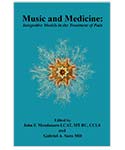
Music and Medicine: Integrative Models in the Treatment of Pain
Edited by John F. Mondanaro and Gabriel A. Sara $65.00
Pain as a universal experience is indiscriminate across age, culture, diagnosis, and financial status. Its complexity has challenged care providers to think more broadly to the inclusion of non-pharmacologic means to treat those living with it. Music has emerged as a treatment modality that potentially and simultaneously addresses body, mind, and spirit to effect change is the way pain is experienced, processed, and released. This text includes contributions by music therapists, physicians, and psychologists using state-of-the-art music-based approaches to the treatment of pain. From the beginning of life in the Neonatal Intensive Care Units through the end-of-of life in Hospice Care; across a myriad of diagnoses, from cancer, Sickle Cell Disease and HIV/AIDS to spinal pain and tinnitus, music therapists, psychologists, physicians and a host of disciplines are integrating music in care approaches that are indelibly impacting the paradigm of healthcare emerging in this century.
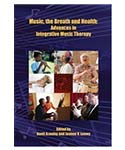
Music, the Breath and Health: Advances in Integrative Music Therapy
Edited by Ronit Azoulay and Joanne V. Loewy $35.00
The breath affects multiple dimensions of our health. Scientific research is increasingly demonstrating the influence of breath on emotion, physical health, resilience and vitality. Music offers a unique contribution to breathing function: Listening to music can impact breathing rhythms; live music entrained to breathing rhythms may support interpersonal connection; and active music-making using the breath directly (e.g., wind instrument playing and/or singing) can support optimal respiration. Integrative music therapy incorporates clinical interventions using music and breath within a holistic view of the patient and healthcare delivery. In this book, contributors from music therapy, medicine and related healthcare professions offer clinical methods and research on music, the breath and health across a variety of populations including pulmonary medicine, mechanical ventilation, coma, pain management, procedural support, childbirth, neonatal intensive care, oncology, end of life, psychotherapy and wellness.
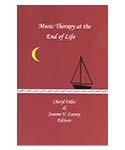
Music Therapy at the End of Life
Edited by Cheryl Dileo & Joanne V. Loewy $30.00
A state of the art text on the uses of music therapy in hospice care. Following an introductory section, the book contains contributions by a host of national and international music therapy experts in end of life music therapy care. In section 2, clinical issues, such as spirituality, quality of life, and cultural issues are addressed. A variety of relevant music therapy approaches are described in section 3, including music and imagery, improvisation, voice work, and the use of songs. Finally, in Part 4, professional issues, such as training and advanced competencies are detailed.
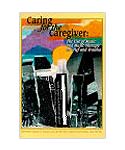
Caring for the Caregiver: The Use of Music and Music Therapy in Grief and Trauma
Edited by Joanne V. Loewy and Andrea Frisch Hara $50.00
A collection of reflections on music therapy interventions provided as a part of the New York City Music Therapy Relief Project, sponsored by AMTA and the Recording Academy after September 11th, 2001. The nine-week program provided training and support through music, music therapy techniques, and discussion for caregivers to nurture themselves and creatively process the aftermath of September 11th. Participants included music therapists, medical professionals, social workers, relief workers, police officers, psychologists and survivors. The sessions included music-facilitated experiences paired with trauma and grief training.
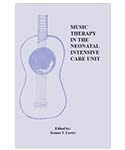
Music Therapy in the Neonatal Intensive Care Unit
Edited by Joanne V. Loewy $20
Medical music therapy has received growing attention in the past decade. The Neonatal Intensive Care Unit (NICU) is an area of great potential for music therapy intervention. This book addresses the development of NICU music therapy from a variety of perspectives (medical, nursing, social work and child life) incorporating observation, research and clinical practice. While much excellent pioneering work has researched the use of pre-recorded music with infants, this book focuses primarily on the use of live, clinical improvisation and music psychotherapy approaches which include the impact of the parent/s and of music's ability to enhance bonding.
In attempting to work with the fragile population of infants and their caregivers in the neonatal intensive care units, music therapists assess the musical sounds that a baby produces, which are indicative of his/her physical functioning: the tone of the cry, the rhythms of the heart and breathing, physical cues in movement, sucking and eating patterns, awake and asleep states. Topics covered include: the effect of music and sound on perinatal brain development, team centered and family centered approaches to music therapy in the NICU, various techniques including the effect of contingent music to increase non-nutritive sucking of premature infants, the use of infant directed singing as a mechanism for bonding, developing and communicating, and the effects of gentle, Environmental Music Therapy (EMT) and its effect upon live music on the sound environment of the NICU, as well as case studies, theoretical discussions and research.
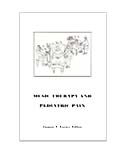
Music Therapy & Pediatric Pain
Edited by Joanne V. Loewy $20
Music Therapy & Pediatric Pain includes the writing of 21 clinicians and researchers committed to developing the area of music therapy and pediatric pain. Medical music therapy, based on a mind-body model, unifies numerous orientations and substantiates the premise that medical aspects of practice can be achieved via music therapy, as in the use of drumming to release a painful experience of veni-puncture, or the use of a gong to assist a child in breathing through an episodic acute painful crisis, rather than providing a pharmacological agent. In addition, medical aspects of practice can be achieved through the incorporation of psychotherapeutic principles into traditional medical practice, such as entraining music to help a failure-to-thrive infant feed or bonding integrative lullabies used to alleviate the inherent stress that can develop between parent and child during hospitalization.
Each of the authors contributes a perspective that illuminates the scope of practice in the medical music therapy model including process oriented approaches, multidisciplinary approaches, the ethics of pain control in infants and children, music therapy practice in pediatric music therapy settings, theory and research on music therapy and pediatric pain, techniques such as entrainment, clinical music improvisation, imagery, music vibration, and the rhythmic language of health and disease, applications with particular populations such as cancer, sickle cell and surgical procedures and a bibliography. This introductory text provides the reader with some guidelines that enhance the assessment and treatment of pediatric pain through a variety of music and music therapy practices
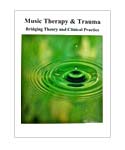
Music Therapy & Trauma: Bringing Therapy and Clinical Practice
Edited by Kristen Stewart $45
The collection of material gathered in this book is a reflection of the impressive work of leaders in the fields of music therapy, art therapy, trauma, neuroscience, and education who came together for the 1st International Music Therapy & Trauma Symposium: Bringing Theory and Musical Practice, held on June 9 and 10, 2008, at Mount Sinai Beth Israel in New York City. The book provides a link between trauma theory, current trauma principles, and music therapy and creative arts therapy practices in a broad range of settings and population, and covering an extended scope of trauma exposure.
Throughout this book, the readers will find an extensive compilation of models, techniques, case vignettes that will contribute to understand the use of music therapy across ever expanding parameters trauma exposure. The work has been organized into four parts: Foundations, Current Practices in Adult Trauma, Current Practices in Childhood Trauma, and Personal and Professional Perspectives. Each contribution serves to stimulate our professional perspectives, clinical approaches, and considerations for continued investigation and research.
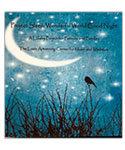
Project Sleep: Wonderful World Good Night - A Lullaby Project for Patients and Families
Produced by: Wen Chang-Lit
The collection of songs gathered in this CD is a reflection of the multicultural nature of New York City. Soothing and gentle recordings feature the richness of various cultures. This CD includes a Hebrew, Celtic, Puerto Rican, and Gypsy, Chinese, Catalan and a Norwegian lullabies as well as arrangements of What a Wonderful World by Louis Armstrong.